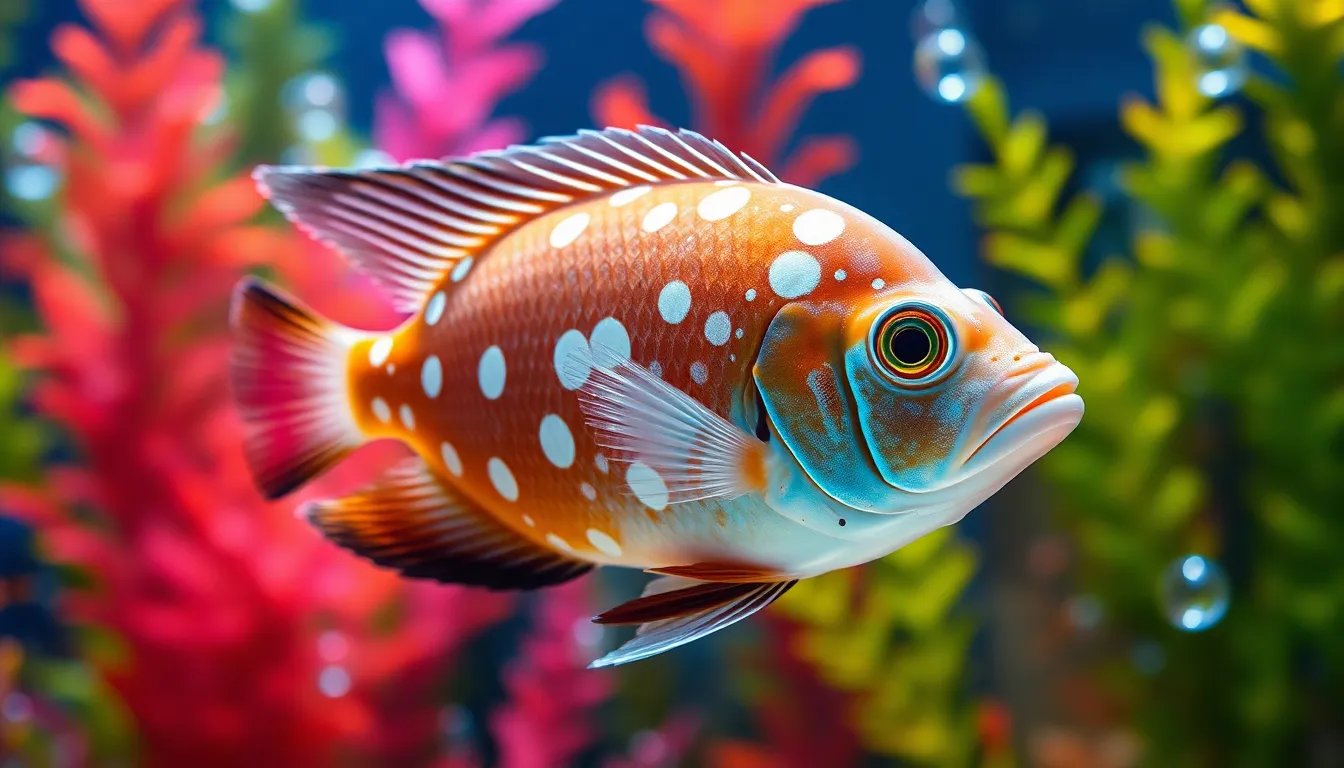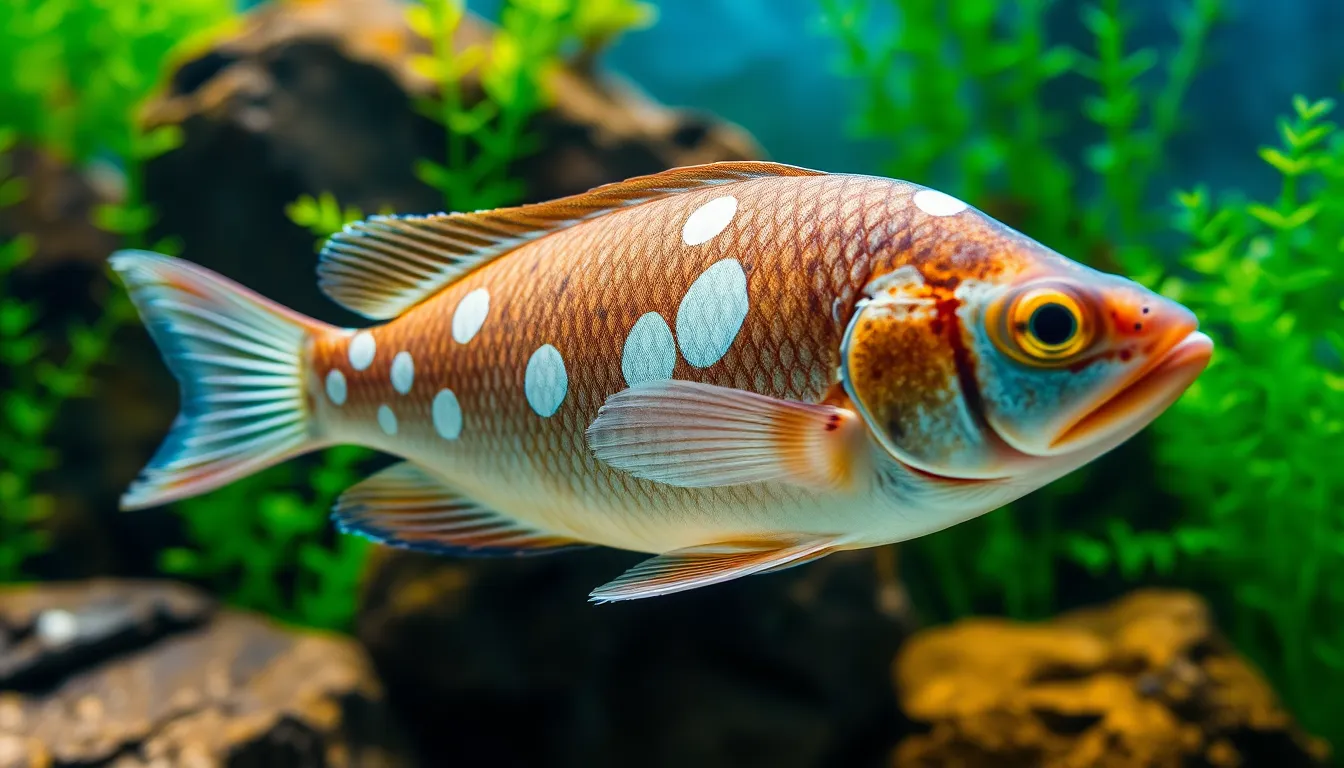Table of Contents
ToggleWhite spots on fish can be alarming for any aquarist, but not all of them indicate a serious problem like ick. Understanding the various causes of these unsightly blemishes is crucial for maintaining a healthy aquarium. From environmental factors to specific diseases, the reasons behind white spots can range from benign to concerning.
In many cases, these spots may be a sign of stress or minor infections rather than a full-blown outbreak. Identifying the underlying issue early can save both the fish and the tank’s ecosystem. By exploring the common causes of white spots that aren’t related to ick, fish owners can take proactive steps to ensure their aquatic companions thrive in a safe and healthy environment.
Understanding White Spots on Fish Not Ick
White spots on fish can originate from various causes other than ick. Identifying these causes helps aquarists prevent potential issues. Common sources of white spots include:
- Environmental Stress
Environmental stress factors, such as drastic temperature changes or poor water quality, lead to changes in the fish’s skin. Monitoring water parameters, including pH and ammonia levels, enhances fish health.
- Fungal Infections
Fungal infections manifest as white patches on skin or fins. Often occurring after injuries, these infections require immediate attention. Treating with antifungal medications prevents further complications.
- Parasitic Infections
Besides ick, other parasites can also cause white spots. Flukes and whitespot (not to be confused with ick) affect fish. Identifying the specific parasite guides effective treatment options.
- Lymphocystis Disease
Lymphocystis presents as cauliflower-like white growths on the skin and fins. This viral infection isn’t directly harmful but indicates compromised immune systems. Improving water quality and nutrition supports recovery.
- Calcification
In certain species, such as cichlids, calcium deposits result in white spots on scales. These benign blemishes don’t affect fish health significantly but require knowledge for accurate identification.
By understanding these causes, fish owners can recognize signs of distress early. Establishing a proper care routine mitigates risks associated with white spots, promoting the longevity and vitality of aquatic life.
Common Causes of White Spots

White spots on fish can stem from various factors, each indicating different underlying issues. Identifying these causes is crucial for effective treatment and maintaining a healthy aquatic environment.
Fungal Infections
Fungal infections, often appearing as white or gray patches on fish, result from poor water quality or stress. Saprolegnia species are common culprits, thriving in compromised environments. Signs include fluffy growths on the skin or fins. Treatment involves improving water quality and using antifungal medications.
Bacterial Infections
Bacterial infections can manifest as white spots, often accompanied by redness or swelling. Aeromonas and Pseudomonas species are frequently responsible. Fish may display signs such as lesions or ulcers. Proper sanitation, along with antibacterial treatments, helps address these infections effectively and promotes recovery.
Parasitic Infections
Parasitic infections, while often linked with ick, can also present as white spots without suggesting that condition. Protozoans such as Trichodina and Epistylis can lead to these symptoms. Infected fish may exhibit lethargy and rapid gill movement. Treatment focuses on medicated baths or systemic treatments to target the specific parasites.
Identifying the Symptoms
Recognizing symptoms associated with white spots on fish is crucial for effective diagnosis and treatment. Attention to both the physical appearance of the spots and any behavioral changes in the fish can provide valuable insights into their health.
Appearance of White Spots
White spots can vary significantly in appearance. They may manifest as small, raised bumps or flat patches on the skin and fins. Characteristics include:
- Size: White spots can range from pinhead-sized to larger than a pea, depending on the underlying issue.
- Texture: Some spots appear smooth, while others might have a fuzzy or granular texture, indicating potential fungal infections.
- Location: Spots may be found on specific areas such as the fins, gills, or body, which can help identify the cause.
- Color: While typically white, some spots might present with gray tones or slight yellowing.
Paying attention to these details aids in distinguishing between minor issues and those requiring immediate interventions.
Behavior Changes in Fish
Behavioral changes often accompany the appearance of white spots and can indicate distress or illness. Common changes include:
- Increased hiding: Fish may seek shelter more frequently, avoiding open water.
- Irritability: Fish may exhibit aggressive behavior or become skittish when approached.
- Surface rubbing: Fish might rub against surfaces in the tank, a sign of irritation or discomfort.
- Reduced appetite: A significant decrease in feeding can indicate stress or sickness.
Observing these behavioral changes alongside visible symptoms helps fish owners determine the urgency of potential treatment options.
Treatment Options
Choosing the right treatment for white spots on fish depends on the underlying cause. Proper diagnosis combined with timely intervention supports fish health and aquarium stability.
Medications and Remedies
- Antifungal Treatments: Target fungal infections with medications containing ingredients like formalin or potassium permanganate. These remedies effectively eliminate pathogens causing white patches.
- Antibacterial Medications: Address bacterial infections using broad-spectrum antibiotics such as erythromycin or tetracycline. These treatments help reduce inflammation and clear infections.
- Antiparasitic Solutions: Use antiparasitic treatments, including copper-based products and praziquantel, for combating parasitic infections. These agents are effective against various parasites that may present as white spots.
- Salt Baths: Apply salt baths, using aquarium salt, to reduce stress and promote healing. Salt can help alleviate minor infections and improve fish resilience.
- Quarantine Protocols: Implement quarantine practices for new fish before introducing them to the main tank. This step minimizes the risk of spreading infections and allows for observation of any symptoms.
Prevention Tips
- Maintain Water Quality: Regularly test and balance water parameters, including pH, ammonia, nitrite, and nitrate levels. Consistent monitoring prevents stress-related issues.
- Regular Maintenance: Perform routine tank cleanings and change 10-20% of the water weekly. This practice keeps the environment stable and reduces the risk of fungal and bacterial outbreaks.
- Yeast Supplements: Introduce probiotics or yeast supplements to enhance fish immune systems. A strong immune response helps fend off various infections.
- Avoid Overcrowding: Limit fish numbers according to tank size. Overcrowded tanks increase stress and the likelihood of disease transmission.
- Feed a Balanced Diet: Offer high-quality, varied diets to meet nutritional needs. Keeping fish well-fed strengthens their immune systems, reducing susceptibility to infections.
Recognizing the various causes of white spots on fish is crucial for maintaining a healthy aquarium. By understanding that these spots aren’t always indicative of ick, fish owners can take appropriate action to address underlying issues. Early identification of symptoms and behaviors associated with white spots empowers owners to implement effective treatment strategies.
Proactive measures such as maintaining water quality and observing fish behavior contribute significantly to the well-being of aquatic life. By staying informed and attentive, fish owners can ensure their pets thrive in a stable and healthy environment.




